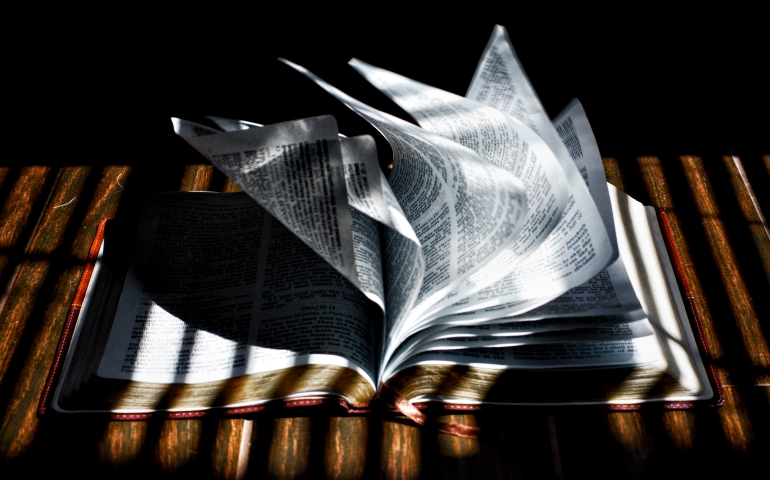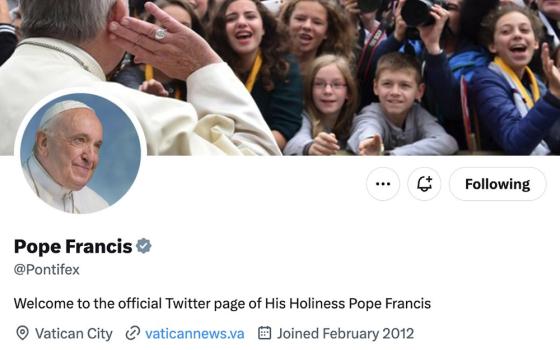
(Unsplash/Luke Palmer)

THE INVISIBLE BESTSELLER: SEARCHING FOR THE BIBLE IN AMERICA
By Kenneth A. Briggs
Published by William B. Eerdmans Publishing Company, 255 pages, $25
If you haven't read the Bible in a while — or if most of your contact with Scripture doesn't come from the Bible itself — the premise of Kenneth A. Briggs' The Invisible Bestseller: Searching for the Bible in America might resonate with you.
As a child, Briggs' world was flush with biblical references and literacy; he remembers being inspired by Bible passages taught and explained to him in church, and feeling as if "practically all" Americans in the post-WWII days of his youth spent Sundays hearing similar lessons.
Times have changed, however, and Briggs writes that the Bible has "largely receded from public view." He has the statistics to back that up — according to the polls he cites, 88 percent of American households own a Bible, but only 53 percent of Americans said they read the Bible more than once or twice a year in 2014. These facts and memories in hand, Briggs is spurred to go on a cross-country, quasi-pilgrimage to "discover what has become of the holy book that Abe Lincoln called the 'greatest gift God has ever given to man,' and where it figures into a contemporary America fraught with restlessness and uncertainty," with the hope it would "inspire discussions of where we go from here."
This sojourn into American Christianity brings Briggs to people and places both expected and surprising, such as the developer of a Bible app that lets the faithful study on the go, discussion of Bible-centric television shows, and the 2012 joint conference between the Society of Biblical Literature and the American Academy of Religion.
Especially memorable among these is his trip to Dayton, Tennessee, home of the Scopes trial in 1925. By Briggs' estimation, the trial, in which John T. Scopes agreed to be tried for violation of a Tennessee law forbidding teachers to lecture on evolution, was central to the creation of the stereotype of backwardness and anti-intellectualism that has dogged conservative Christianity ever since.
Through his empathetic depiction of current Dayton residents who "struggle with doubts" about biblical inerrancy and the role their hometown played in history, Briggs brings out a wider phenomenon of American Christians who may keep their faith private to avoid being dismissed as uneducated or morally overzealous. The crux of Briggs' argument emerges here — that is, Christianity has become associated with socially undesirable traits, and thus the religion and its holy book must find new ways to attract the faithful and fit in.
Briggs, who is a contributor to the NCR Today blog, spent his career as a religion reporter for Newsday and religion editor for The New York Times, and it shows — this chapter, and several others throughout the book, are masterful pieces of reporting that would be right at home on the front page of either publication.
An unfortunate side effect of this excellent reporting, though, is the relative lack of connective tissue between chapters of the book. What does the Bible convention in Florida in Chapter 2 have to do with the conservative family in the epilogue? Briggs doesn't connect the dots for you, and as a result, each section of the book feels like an independent news story rather than a part of a larger thesis. Readers looking for a heavily researched, scholarly work will be disappointed — this is more of a hybrid of travelogue and memoir.
That said, there's probably no better guide for a journey through contemporary American Christianity than Briggs. His long career of capturing American religiosity comes through on every page, all rendered in truly beautiful prose.
Especially well done is "Song and Dance," a chapter dedicated to modern attempts at obeying injunctions to spread the Gospel. Central to this chapter is film as a means of evangelism, which includes everything from 168 Film Project, a festival where entrants create 10-minute films inspired by an assigned Bible verse, to Mel Gibson's "The Passion of the Christ." The vignettes in this chapter are short, but they contain some of Briggs' sharpest analysis of the Bible's place in contemporary pop culture. Here Briggs considers whether the adaptation of Bible stories as palatable entertainment distorts the message or affects viewer's likelihood to engage with the source material, and it's genuinely riveting. Would the chapter have worked better as a stand-alone piece? Maybe. But I'm grateful for the perspective it provides, regardless.
The Invisible Bestseller is well worth reading just to watch a master at the height of his craft and to encounter the people and places depicted throughout his narratives. As a portrait of American Christianity and its relationship with the Bible, Briggs' book is a great resource — provided you're willing to decide what it all means for yourself.
[Alexandra Greenwald is a freelance religion reporter and writer based in Chicago.]



